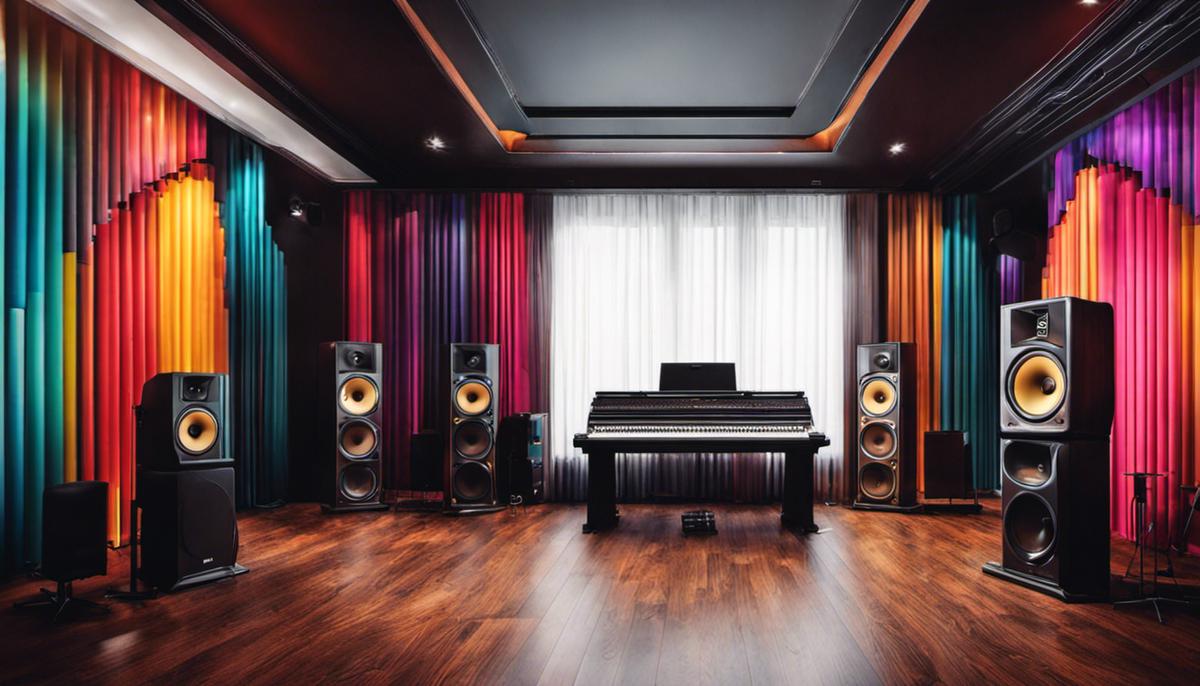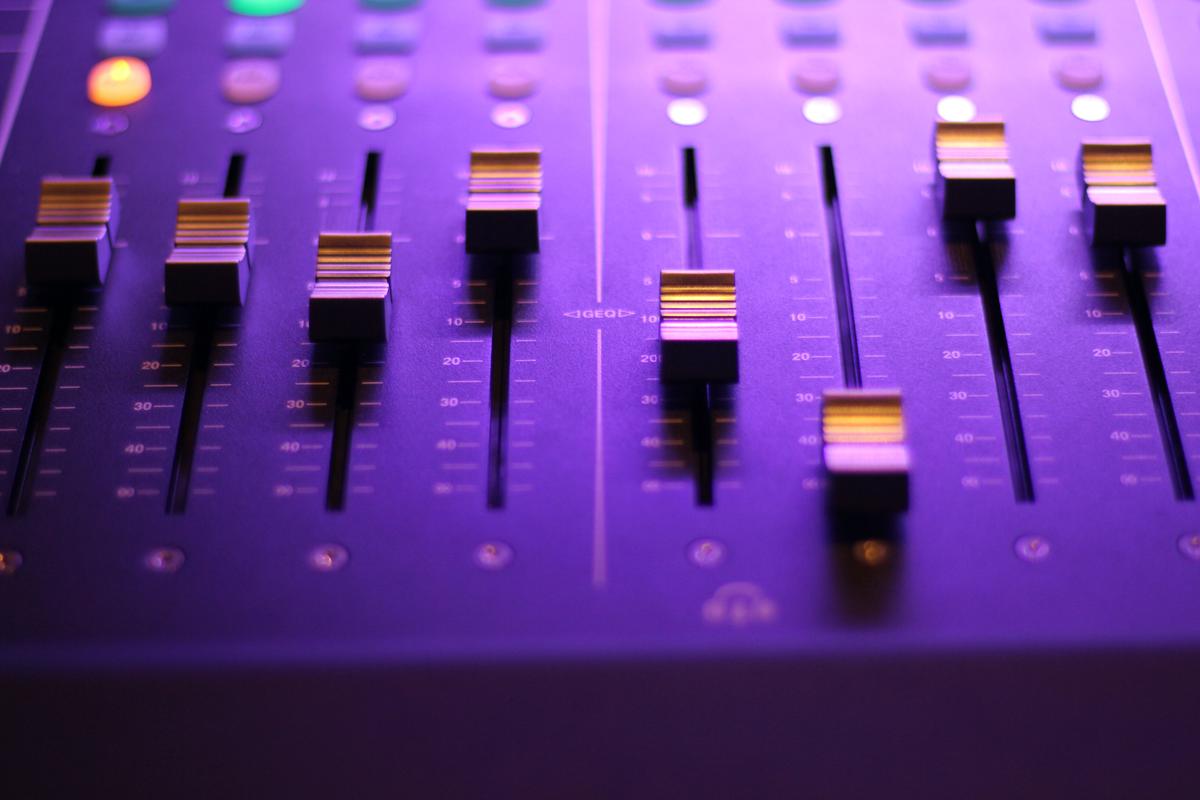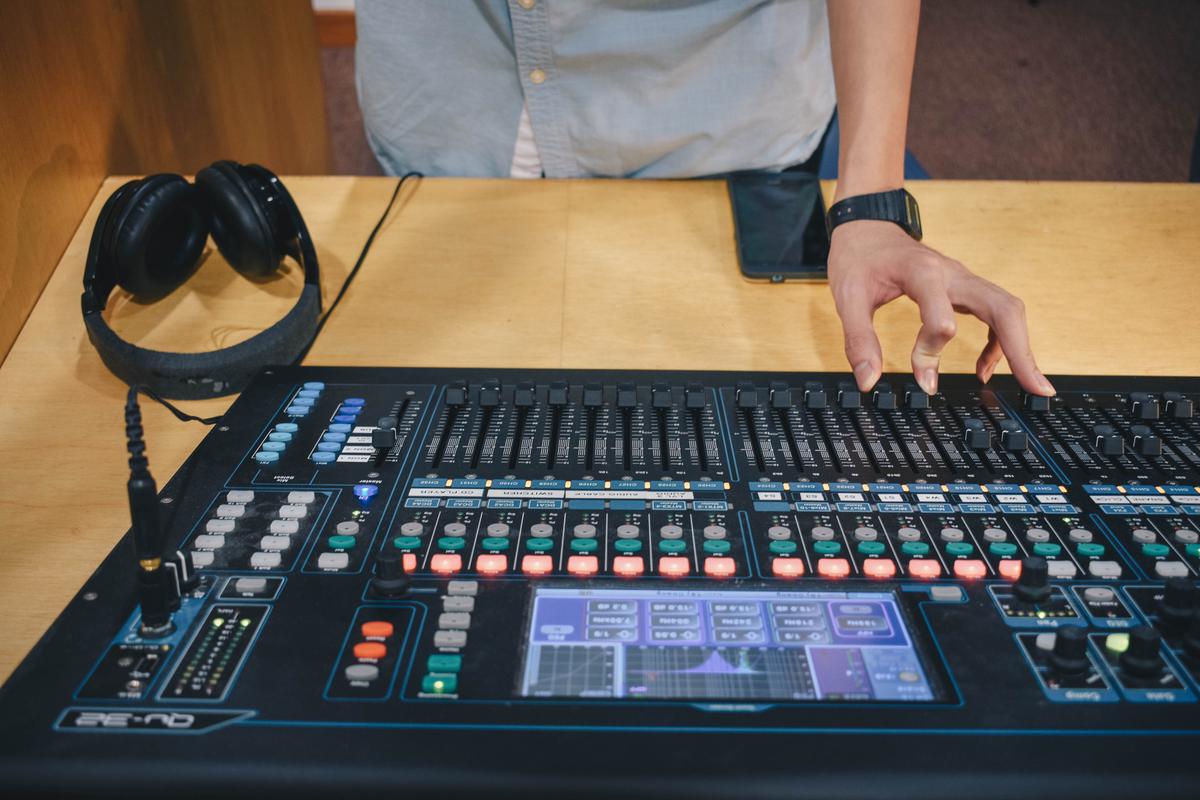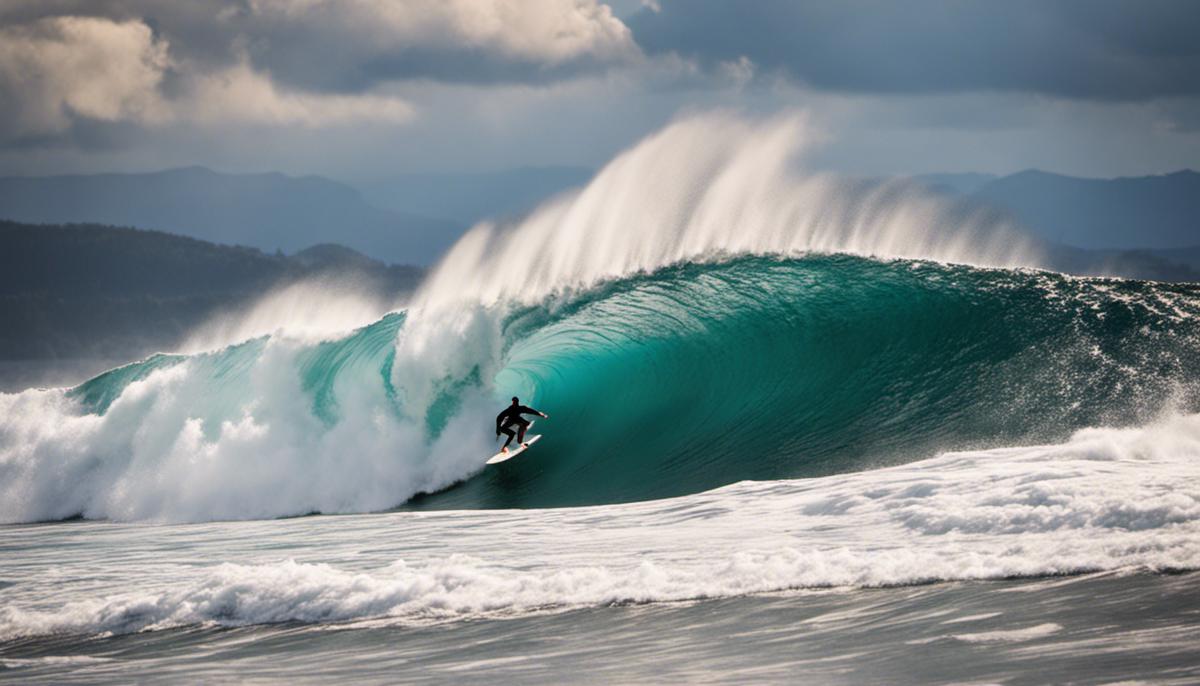Mastering is an intricate dance, entailing a deep understanding of the science of sound and a keen, discerning ear. Failures in the mastering process are as painful as hitting a gnarly wave when you least expect it. This essay, designed for audiophiles and hobbyists, explores various essential aspects of mastering, diving deep into the optimum listening environment, balance in levels, equalizing techniques, the art of sequencing, and the pivotal role of vigilant monitoring. Consider it your guide to avoid wipeouts and ride the wave of mastering to a perfect sonic sunset.
The Importance of Good Listening Environment
Slash the Waves, Not the Vibes: Power of the Room in Mastering Tracks
Whoa, dudes and dudettes! If you’ve been carving up the studio, laying down tracks and dialing in sounds, then listen in, because this gnarly conversation about the importance of the vibe in your listening and mastering space is gonna blow your mind like a freak wave.
First up, let’s lay some tubular truth on you – the vibe of a room is absolutely critical when you’re listening and mastering your track. Yep, you heard right. You wouldn’t catch a wave on a flat ocean, and your dope tracks need the right vibe to get the sound just right. Vibes are like the invisible board we ride on the sound wave.
Think of the room as part of your toolkit. Dude! When you were tripping on how that funky synth track didn’t sound as cool once out of the studio, it was probably the vibe of the room messing with you. The acoustics, temperature, and even the color of the room can compose a symphony of influences on the soundscape, turning your epic track tubular or torpedoing it straight to the bottom.
Who can blame you for not musing over drywall and floor tiles when there’s that gnarly mixing console in front of you and fresh ideas cooking in your noggin? But not dwelling on these factors can lead to an aural wipeout. Control over acoustic reflections, isolation, and room modes can be the difference between riding the sonic pipeline or wiping out on a rogue wave of sound.
Get your noggin around this – even the dimensions of the room, like its size, shape, and materials used, can change your sound wave’s fate. Quite like how a tide changes the wave’s shape, these minute details can seriously tweak your sound. The long-winded story: the vibe of the room can make that bass sound crisper than a dawn patrol on the swells, or as muddy as a gnarly reef.
Mastering in a room that reverberates like an echo chamber or eats up sound faster than you gnaw through post-surf grub? Absolute bummer, dudes! The room vibes rattle around, affecting your perception of the sound. So if the room vibe isn’t spot on, you’re not hearing the true sound. And for a serious tune chaser, that’s like trying to ride the wave in knee-deep water – just not rad at all!
So, folks, before you jump headfirst into that sick beat, remember to check out the vibe of the room you’re working in, because a gnarly room can help your track ride the sonic wave to perfection, or it can totally bail, marring the sound experience.
Keep it gnarly, keep it real, keep it vibing. Tribe, see you on the flip side of the next wave! But for now, get out of the studio, hit the surf and stoke that creative wave. It’s all part of the vibe magic, dudes!

Balancing The Levels
Keep Your Mix Shreddin’, Dude: Mastering the Art of Level Balancing
Hold your sound waves, dudes and dudettes! Before Usain Bolt-ing into the gnarly world of mix flaming and finessing, pause a sec and let’s rap about this one burning question: What’s the whole mystic saga with leveling our mix, compadre? How do we keep the grooves smooth and the vibes balanced? No worries, we gotchu! Just stick around, and you’ll be soaring on that sound balance grind in no time.
First up, let’s check out this dynamo called dynamic range- Nuh-uh, not about bicep curls, bro! It’s this sick spectrum of difference between the quietest and loudest parts of your track. Too narrow a range, and you got your listeners snoozing; too wide, and boom- you just sent them to the moon. So, tread on that dial with the grace of a surfer catching an early morning swell. The highs and lows gotta ebb and flow like a perfect wave, you feel me?
Then, onto your tracks. Try to visualize them as your bro-squad. Sure, they each got their unique vibes and strengths, but they need to chill and bond together to form that perfect gnarly sound tribe. So, each track should have its space- in frequency and in the stereo field. Don’t go cramping them or let any one of them hog the limelight. Spacing, dudes, it’s all about spacing!
Now, how about dem kicks and bass? Let’s not forget we’re cruisin’ in the rad world of sound where deep resonating bass rides the wave. Try carving out the low frequencies in your non-bass tracks to let the bass cut through. Bit like giving the giant wave its very own surfing alley, ya dig?
Jumping ahead, picture leveling as a sweet ride on your longboard. You gotta keep your balance right, or else…splash, you’re fish food. Use your Volume Fader and Trim tool like the most delicate sandpaper on a fresh new surfboard- let it glide smoothly to dial in levels, starting from the loudest parts. Just remember, you’re aiming for balance, not an equilibrium. Let your mix soar and dip where it pleases- you just have control of the reins, amigo!
Shout out to automation now – easy does it, bro! Automation is the secret, magical key that can help keep that surf ride smooth – it can gracefully nudge those abrupt volume changes and rough spots into the sweetest cascades.
Finally, here’s the major buzz- Test your mix on different sound systems, just like how any rad surfer would test their board on different waves. Your car, speakers, headphones, laptop – variety is the spice here, compadre!
So, there you have it, sound soldiers – the gnarly gist of leveling and maintaining the balance in your mix. Dip into these waters and you’d be doing sonic somersaults on your surfboard in no time! Remember – in the wild, wild west world of sound, it’s all about balancing those binaural waves. Stay stoked, and keep those vibes cruisin’!

Photo by denisseleon on Unsplash
Equalizing Techniques
Equalizing Techniques: The Unsung Hero in Mastering Dude!
Surfer’s up brah! Just like that perfect wave we’re always chasing, mastering is all about finding the sweet spot, that balance where everything just vibes. If the wave is the sound and the surfboard is our studio, then equalizing techniques are totally the board wax. It’s the unsung hero, keeping everything gnarly, slick, and sliding right where it needs to be.
No doubt, broseidon, dynamic range is like our surfing playground. Limited dynamic range is like a flat sea, no thrill there, but going all limitless can end up like a stormy sea, way too hectic to surf! So, we gotta find that balance where each sound can ride at its peak without crashing into another. That’s where mastering steps in, dude, carefully controlling each sound’s amplitude, allowing them to flow like rad waves.
Dude, balancing tracks in the frequency and stereo field is just like balancing on that swaying surfboard. Just as we wax and position our feet on our board, we gotta position our sound sources in stereo field, creating an even, wider, and immersive soundscape for our listeners. It’s like summoning all good vibes from every direction.
Sometimes, there are gnarly mammoth waves aka low frequencies from kicks and bass. We’re stoked to ride them, but too many of these huge waves and we’re talking wipeout, drowned in all that low-end mud. Solution? Just carve out them waves, mate! Use HPF or a low shelf EQ to cut those frequencies and keep things clean.
Now, imagine if the ocean could adjust its waves according to our surf style? Paradise, right? That’s what the volume fader and trim tool are all about, baby. They allow us to adjust levels for each track, creating smooth surfing conditions, or should we say, smooth transitions.
And remember, automation is the rad bro always there to help us out. It’s like that jet ski that pulls you out when you wipe out, providing aid in the form of volume, pan, effect sends, and even EQ. Tech is thrilling, ain’t it?
Last but not least, ’cause we’re chill, we don’t wanna surf in just one place. Testing mixes on different sound systems is like surfing in different beaches around the world. Each sound system has its own vibe, its own sound wave. We gotta make sure our track vibes, no matter the sound system.
So there you have it, dudes and dudettes, mastering ain’t just about the right gear or the perfect room, it’s about the skills, the techniques, and above all, equalizing for that groovy soundscape, creating the ultimate surround sound wave for everyone to ride. Hang ten mate, keep riding those sound waves! Time for this old surfer to catch a wave and leave you with these gnarly equalizing methods. Peace!

Monitoring the Mastering Process
With the groove of the room and the trimming of the tunes already covered, the saga of sound wizardry continues. This time, it is all about making that crucial final touch, my dudes. What’s left for us to navigate on these sound waves? The whole enchilada of the mastering process! Get your surfboards ready because we’re about to catch a gnarly wave of epic sound knowledge.
So, we’re cruising down the frequency highway, right? We’ve got this killer beat and we’re trying to make it sound like the dopest tune on the planet. But remember that mastering is not just about making a track louder; it’s giving life to that track, making it pop like corn in a hot pan.
One way to achieve this is by mastering the dynamic range. You’ve got to keep the base solid but let the highs and lows dance around like dolphins in the ocean. This lets your track breathe, putting every note, every nuance under the spotlight, while keeping the big picture in view. Gimme some of that sweet, sweet dynamic range, baby!
Now attention to our friendly knobs and sliders! Faithful companions on this wild ride, they demand your deft touch. Tweaking the volume faders and trim tools—that’s a fine game of balance, man. Like adding little sprinkles of sound pixie dust, it’s all about giving each track its moment in the sun. Remember, every component in the mix desires to feel loved and included!
Now that we’ve had a dance with the volume and dynamic range, we gotta address an often underestimated ally: Automation. Bringing fluidity to your transitions, it’s like shapeshifting, man—the thrill of morphing one sound scape into another without any hiccups. Smooth, seamless, sweet!
What’s next? We ride those sound waves right out of the studio! Whip out those gnarly headphones, decent bookshelf speakers, run-of-the-mill laptop speakers–all of it! Because we’ve got to put our masterpiece through the trials of different sound systems. Each system adds its own flavor, and it’s your checkered flag letting you know your track is ready to jam in any situation.
The gist of mastering cannot be understated, dudes. The key lies in keeping both your peepers and your ears on high alert, riding the waves of sound across every crest and trough. It’s a beautiful dance, an intricate balance, the grand finale to a banging masterpiece! Hang loose and happy mastering, my friends! Catch ya on the flip side!

Photo by sayhitobel on Unsplash
The Art of Sequencing
Dude, it’s like capturing a mondo wave, sequence your tunes is all about riding that sound wave without wiping out.
Now, let’s break it down. Mastering or tuning has totally similar vibes with surfing. First, you need a good surfboard – in our case, let’s say that’s the dynamic range. Picture it as the board’s flexibility, the wider the dynamic range, the more knee-bending, hair-raising ride you can offer to the eardrums of listeners, you got me?
Time to paddle! Once you’ve got the hang of the dynamic range, steer towards balancing the tracks in the frequency and stereo field. It’s like picking the perfect wave, it needs to have the right speed, height, and power. To achieve this, bro, make sure your kicks and bass aren’t scuffling for room in the low frequencies. It’s all about sharing space, like dolphins in the ocean.
But hey, don’t space out! Keep it steady with volume fader and trim tool. They’re like the wax on your board, grip it right and you’ll have a smooth, leveled track that won’t sink beneath the waves of a red digital distortion sea.
And you know what’s gnarlier than riding a wave? Riding a series of waves! Automation is your best buddy for transitioning from track to track, keeping the listeners stoked without the awkward lulls. It’s like linking your rides from wave to wave, maintaining that wicked flow.
Then comes the biggest kahuna: testing. Just like scouting for swells, you need to kick out your tune on different sound systems. It ain’t no good if it only sounds tubular on your gear but a total wipeout on someone else’s. Playing the track on different devices will help identify any range issues, so that you can get it fixed before sharing your masterpiece.
So, next time you’re mastering, think like a surfer—Always looking forward, ready, and absolutely stoked for the ride! Because bro, even though we’re in completely indoors, all these sounds? They’re our ocean. And whether its resonating from the mountains or from the beats, it’s all about keeping the rhythm and riding the wave. Totally gnarly, right?

The mastering process, much like a well-executed surf ride, requires dedication, precision, and practice. Every element, every bounce of sound, every tiny detail matters and if you overlook one, your whole mix could falter. With an understanding of a suitable listening environment, the delicate balance of levels, strong equalizing techniques, continual monitoring, and the art of sequencing, you’ll be carving up your mixes like a seasoned surfer on the ocean waves. So, about that perfect sonic sunset? With these tools, you’re well on your way there.

Comments.
Currently there are no comments related to this article. You have a special honor to be the first commenter. Thanks!